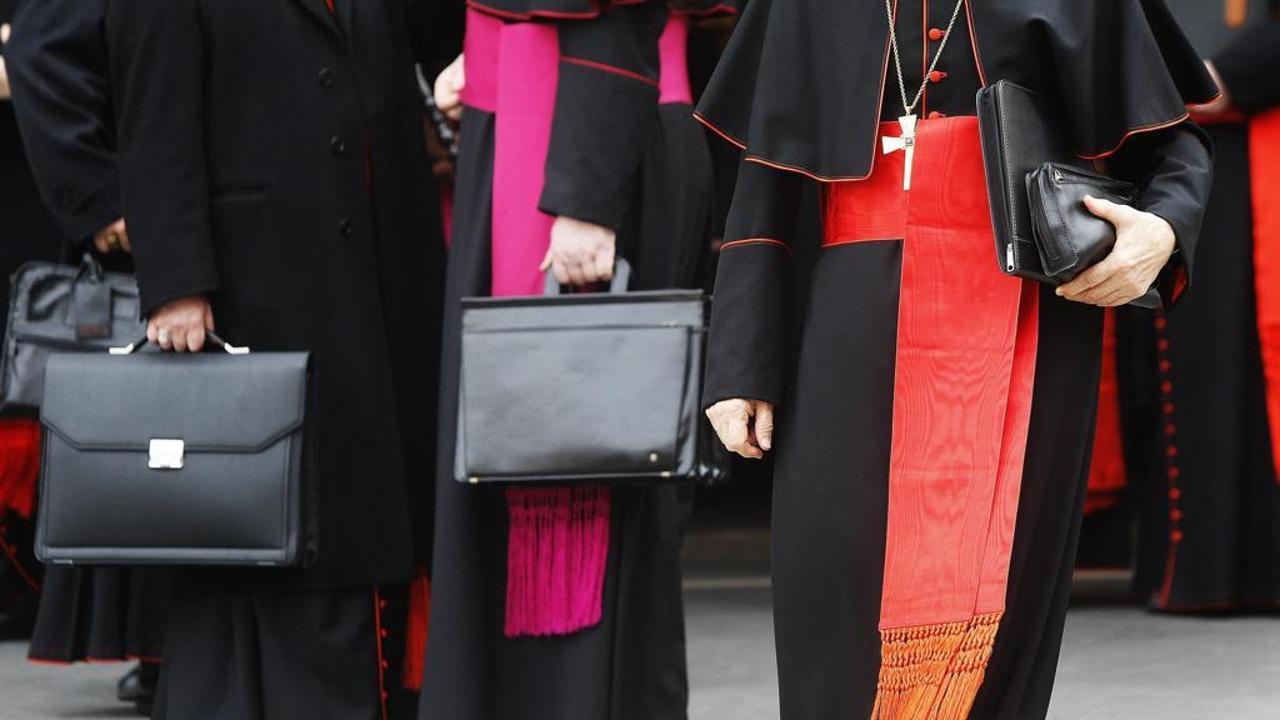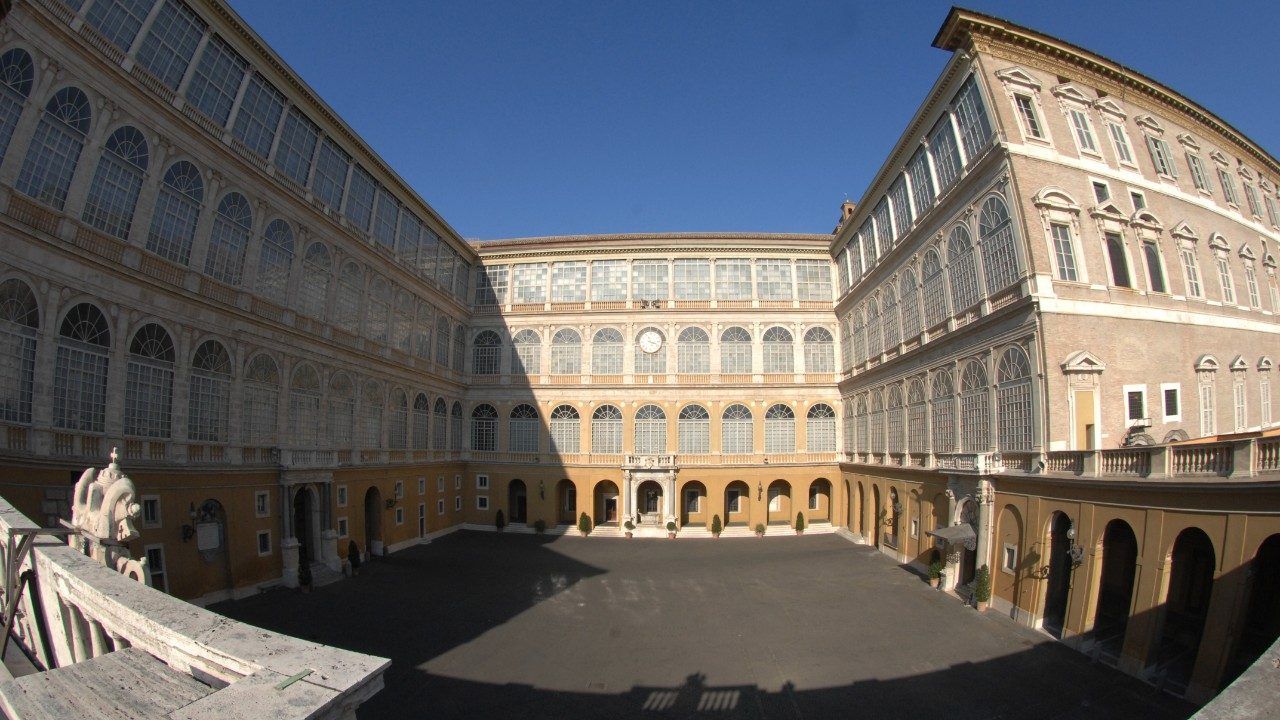Vatican City – The publication of the new General Regulation of the Roman Curia marks the completion of a process set in motion three years ago. On 12 April 2022, in a Chirographus issued shortly after the promulgation of the Apostolic Constitution Praedicate Evangelium, Pope Francis acknowledged that the new constitutional framework required a thorough overhaul of the Curia’s regulatory structure. He stated that the entry into force of the Constitution “also requires that the current General Regulation of the Roman Curia be revised,” so that it would reflect not only the new norms but the underlying principles shaping the renewed institutional architecture.
It was in this context that the Interdicasterial Commission for the revision of the General Regulation was established, chaired by Archbishop Filippo Iannone, then Prefect of the Dicastery for Legislative Texts, and composed of Archbishop Edgar Peña Parra, Archbishop Nunzio Galantino (then President of APSA), Bishop Marco Mellino (serving as secretary), Fr. Juan Antonio Guerrero Alves (then Prefect of the Secretariat for the Economy), and Vincenzo Buonomo (then Rector of the Pontifical Lateran University). The Commission’s mandate was clear: streamline and professionalize the Curia’s internal operations, update procedures, and offer criteria for the Ordines servandi, the practical norms governing day-to-day functioning. With today’s approval by Pope Leo XIV, the Commission completes its work, leaving the Church with an entirely renewed regulatory framework.
A structural innovation: separating the General Regulation from the Personnel Regulation
One of the most significant changes is structural. For decades, a single text governed both institutional procedures and employment norms, blending administrative, functional, and labor matters into one. The new system creates a decisive distinction: the General Regulation now governs structures, procedures, inter-departmental relations, and official acts; the Personnel Regulation independently addresses recruitment, career development, duties, evaluation, and ethical standards.
The distinction is substantial, not merely formal. The Curia now resembles a modern administrative institution, coherent with contemporary standards of public administration. The aim expressed in the 2022 Chirographus - achieving a more efficient and sustainable management of labor in the Holy See - finds concrete realization here.
Opening to modern languages: a cultural turning point
A major innovation concerns the linguistic regime. The previous Regulation required Curial acts to be drafted “as a rule in Latin,” allowing other languages only “as needed.” Latin thus remained the ordinary instrument of administrative action. The new Regulation reverses this presumption: “Curial Institutions shall draft their acts as a rule in Latin or in another language.” The shift is meaningful. Italian, English, French, and other modern languages are no longer exceptions but recognized instruments of Vatican administration. This does not diminish Latin; it broadens the linguistic horizon in which the Curia operates.
Protocoling and the right to an answer: accountability toward the faithful
A groundbreaking change concerns the Curia’s relationship with the faithful. All requests arriving at Dicasteries must now be logged, assigned to a responsible official, and – crucially-answered. This effectively establishes a right to a response. Such protection did not exist under the previous Regulation. For years, the Curia replied selectively and maintained silence on the most delicate matters. This silence often shielded opaque dynamics, fueled undue pressures, and enabled non-transparent power structures. The reform embodies a principle central to good governance: procedural transparency. Every request now enters a traceable, verifiable process.

Increased coordination and the renewed centrality of the Secretariat of State
The new framework reinforces coordination and explicitly strengthens the role of the Secretariat of State. Entities no longer act as isolated units; they must share documents, request input, consult the Secretariat on sensitive matters, and transmit periodic reports-including an annual report. This context also explains why the Regulation required more than three years to complete. Pope Francis held a markedly different view of the Secretariat of State, and this longstanding tension complicated institutional governance throughout his twelve-year pontificate.
Now, coordination becomes a structural requirement. The Regulation introduces precise norms for: co-signature of acts involving multiple Dicasteries, managing overlapping competencies, preventing institutional conflicts, publishing acts in the Acta Apostolicae Sedis and through the Press Office, forwarding all papal-destined acts to the Secretariat of State The Curia is no longer a collection of departments but an integrated administrative organism.
A modern administrative system: motivation, appeals, and review of acts
For the first time, the Regulation: requires that administrative acts be reasoned, citing applicable norms; grants recipients the right to internal administrative appeal; allows Dicasteries to review their own acts through a formal procedure; mandates a centralized and digital registry of decisions; makes proper notification, including electronic notification, essential for validity. The contrast with the old Regulation is stark: the Curia now aligns with international standards of verifiability, contestability, and archival rigor.
Relations with dioceses, religious institutes, and ecclesial movements
The new text precisely defines how the Curia must interact with local Churches. Any intervention involving a diocese requires prior consultation with the diocesan bishop; decisions affecting religious institutes must include dialogue with major superiors; actions concerning ecclesial movements must respect both episcopal authority and the competence of the relevant Dicastery. This marks a shift toward protecting fundamental human rights within ecclesial administration. The Curia must act with respect, not dominance. Previously, much depended on custom and internal culture-often detached from these principles. Bishops and priests were frequently left without recourse. The Curia now positions itself at the service of Bishops, as mandated by Praedicate Evangelium.

Digitalization, security, archives, and restricted acts
The Regulation acknowledges that the Holy See cannot function without digital infrastructure. It introduces: certified IT systems, mandatory digital archiving, scheduled transfer of documents to the Vatican Apostolic Archive, a three-tier classification for restricted acts, access logs, procedures for controlled destruction of documents These tools were unthinkable in the earlier Regulation. The Curia now enters a genuinely twenty-first-century administrative ecosystem.
Pope Leo XIV has been committed to digitalization since the beginning of his pontificate. The Vice-Regent of the Papal Household has been explicitly tasked with digitizing the Papal Household itself. The absence of such systems has long been anachronistic - especially for an institution receiving millions of requests each month. Even in basic services, inefficiencies persist. Papal audience tickets are still paper-based; the Dicastery for Communication remains technologically behind despite its mission. Ordering a simple photograph requires multiple manual steps that any modern digital service automates instantaneously. The Vatican still performs manually what a server could process autonomously.
Formation, integrity, and personnel evaluation
The new Regulation transforms Curial work culture. It introduces mandatory continuing formation, annual performance evaluations, integrity rules—including conflict-of-interest declarations—and links all these elements to the Personnel Regulation, which now serves as the primary labor-law reference. The old Regulation lacked concrete tools for evaluation or oversight. The new system strengthens professionalism, responsibility, and ethical conduct.
A reform that reshapes institutional culture
Taken as a whole, the reform is not a technical adjustment but a juridical and organizational refoundation. The vision running through the text is explicit: the Curia must serve the Church’s mission, not institutional self-preservation; act with transparency, not secrecy; provide answers, not silence; coordinate, not isolate; respect the dignity of work and those who carry it out; and adapt to the needs of the local Churches. Over recent months, the drafts were submitted to Pope Leo XIV, who requested adjustments and refinements before giving final approval—thus enacting norms that embody the principles of Praedicate Evangelium while, as a senior official of the Secretariat of State noted, also “correcting its trajectory.”
d.E.P.
Silere non possum